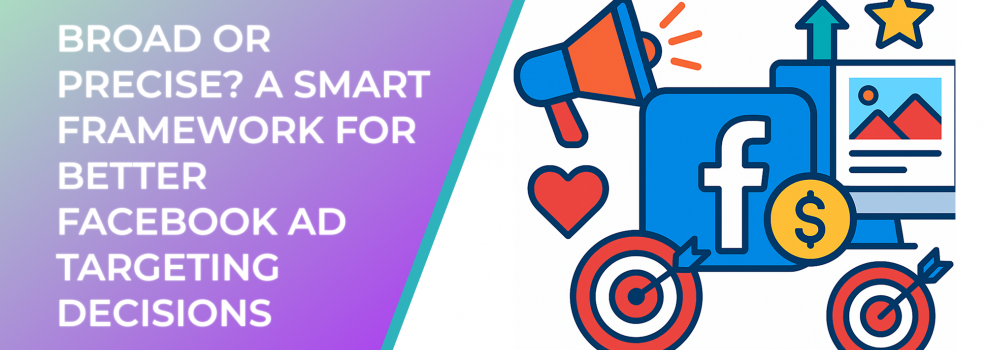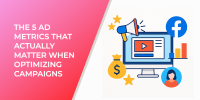Introduction
When launching Facebook ad campaigns, one of the biggest decisions marketers face is whether to go broad or be laser-focused in targeting. Both approaches have their merits, but without a clear framework, you risk wasting your budget or missing high-value opportunities.
In this article, we introduce a smart, flexible framework to help you decide when to use broad vs. precise targeting on Facebook. This framework leverages campaign objectives, audience data, and performance metrics to guide decision-making.
The Case for Broad Targeting
Broad targeting means casting a wide net with minimal restrictions on who sees your ad. Facebook's algorithm takes the lead in finding people likely to convert.
When to Use Broad Targeting:
-
Brand Awareness Campaigns: Let Facebook's AI learn and optimize.
-
Large Budget Campaigns: More data helps the algorithm fine-tune results.
-
Testing Phase: To gather performance benchmarks.
-
High-Volume Products: Especially those with mass appeal.
Key Benefits:
-
Lower CPM due to larger reach.
-
More data for Facebook's optimization engine.
-
Potential to uncover new audience segments.
Statistic: According to Meta, campaigns that used broad targeting and optimized for conversions saw up to 20% lower CPA compared to overly narrow strategies.
The Case for Precise Targeting
A visual guide to choosing the right Facebook ad targeting strategy based on campaign goals, budget, and data depth
Precise targeting involves detailed audience segmentation based on demographics, interests, behaviors, and custom audiences.
When to Use Precise Targeting:
-
Remarketing Campaigns: Target past website visitors or purchasers.
-
Niche Products: Tailor messages to highly specific personas.
-
Limited Budget: Ensure every dollar reaches a likely buyer.
-
Lookalike Audiences: Built from high-value customer segments.
Key Benefits:
-
Higher relevance score and CTR.
-
Better alignment with customer personas.
-
More control over who sees your ads.
Statistic: Marketers using precise interest-based targeting with LeadEnforce's lookalike audience tools report CTR improvements of up to 30%.
Building the Smart Framework
Performance comparison: Broad targeting vs. precise targeting based on key campaign metrics
To decide between broad and precise targeting, ask the following:
-
What is your campaign objective?
-
Awareness: Go broad
-
Conversions/Leads: Start precise
-
-
What is your audience data depth?
-
Rich CRM or pixel data? Consider lookalikes or precise targeting.
-
No prior data? Test broad targeting to collect insights.
-
-
What is your budget size?
-
Larger budgets allow algorithm learning (broad).
-
Smaller budgets benefit from tighter control (precise).
-
-
Are you testing or scaling?
-
Testing phase: Broad for discovery
-
Scaling: Precise to replicate success
-
Combine for Best Results
Savvy advertisers often blend both strategies:
-
Start with broad to gather data.
-
Use insights to build segmented audiences.
-
Retarget with precision.
Leverage LeadEnforce for Smarter Targeting
LeadEnforce helps advertisers create custom and lookalike audiences from Facebook group and Instagram followers. This unlocks powerful precision targeting previously unavailable through native Meta tools.
Check out our guides:
Final Thought
The choice between broad and precise targeting isn't about right or wrong—it's about aligning your strategy with your goals, resources, and stage of the campaign. Use this smart framework to make informed decisions, and don’t forget to iterate based on performance data.
For advertisers ready to elevate their campaigns, combining both strategies with tools like LeadEnforce can unlock smarter, more profitable Facebook ad targeting.

